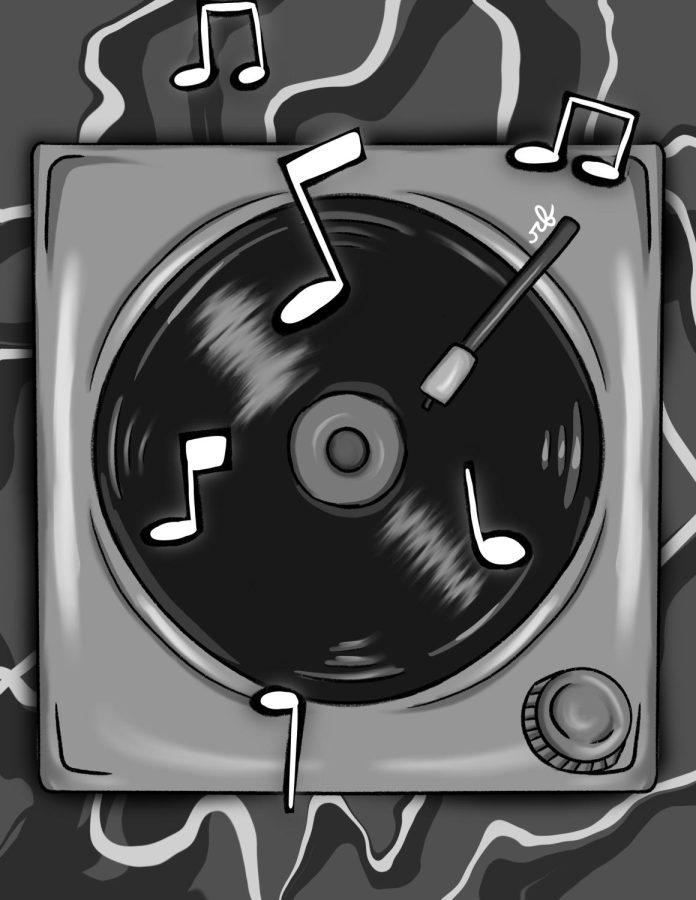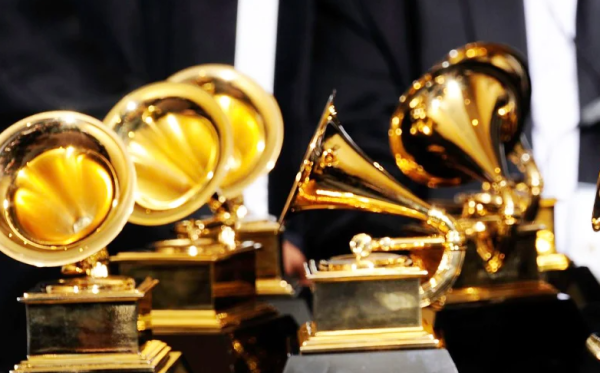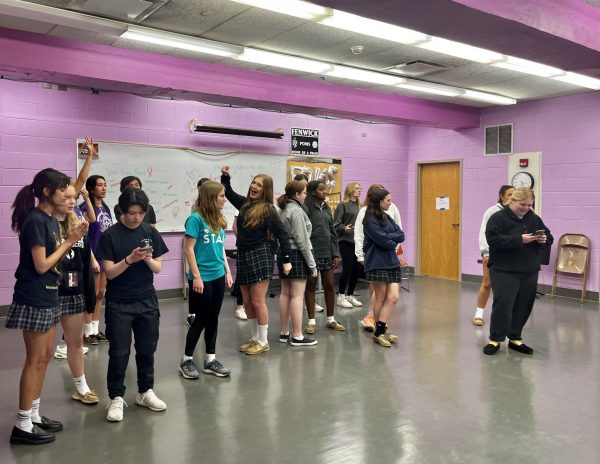Vinyl’s Record-Breaking Come Back
Dust off those turntables, because vinyl records are back! The mesmerizing spirals of the past are back and spinning their way into the hearts of music lovers everywhere. Vinyl record sales spark an uptrend as new generations discover the joy of physical music formats long replaced by streaming. Whether it’s for the nostalgic factor or the satisfying crackle of the needle dropping onto the grooves, records are by far the newest coveted commodity, however, it must be asked: is it all just another fad?
Out of nowhere, stores such as Target and Barnes & Noble began stocking their shelves with colorful pressings of the latest music crazes but where did this all come from? Vinyl records once oversaw the majority of music sales in the 60s and 70s but were eventually replaced by more convenient physical forms such as CDs and cassettes. Following the introduction and quick overtake of digital streaming, it could be inferred that records are expensive, obsolete, and antiquated forms of technology left to collect dust in some grandpa’s collection of classic hits, meanwhile, recent trends say otherwise. According to the Recording Industry Association of America (RIAA), vinyl record sales in the US reached a high of $570 million in 2022, marking a 22% increase from the previous year. In an age of digital consumption, such a return reveals an underlying desire for something more than just an MP3 file. The experience of playing a record is like no other. From tangibly holding a piece of music to being able to display a physical representation of your music taste in your room, playing records on a turntable is an immersive listening experience unable to be replicated by simply clicking play on Spotify. Collecting records holds a stronger connection to the art carved into the grooves and reminds us of simpler, slower times. Unlike digital music files, which get compressed and worsen in quality, the richer analog sound of records best replicates the original music that many argue sounds better to the ear. The sound quality of vinyl is unmatched, providing the listener with the intended musical experience, only adding to the satisfaction of watching the needle slowly make its way down the spiral, as an album plays from the start till the very last note. Additionally, the value of records only increases as time progresses. Some limited edition records can fetch high prices at auctions which only increase as time goes on. Specifically, Junior Rylee Graves says, “I collect vinyl because of the value they’ll have in the future. I have a ton of records from my dad that are from the 80s that are worth quite a bit now, so imagine how they’ll be in the future. It’s also nice how in a few years my kids will have the music I listened to when I was their age. I like to go to vintage stores to see what unique vinyl there are as well. It’s an expensive hobby that may pay out in the future.” The durability of records allows generations of the present and future to enjoy the music and memories attached. The vinyl of today serve as historical markers that will only increase in value. There’s an undeniable appeal to vinyl that has taken music listeners by storm. From the prospect of owning a physical piece of musical history to the enhanced listening experience, the recent revival provides a deeper look into the versatility of music and just how quickly times change. Will cassettes or CDs be next?







